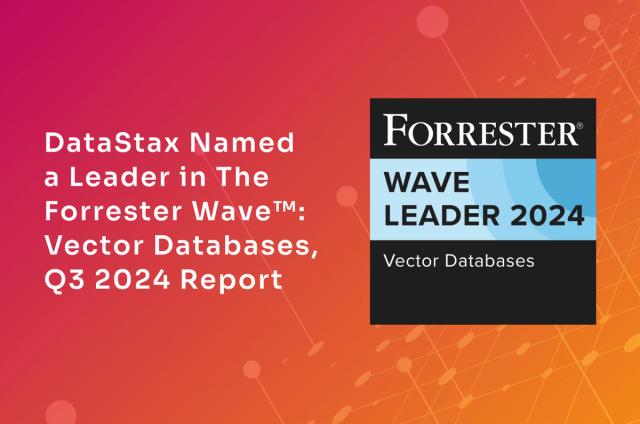Why Everyone Left Standing is Going to be Hybrid and Multi-Cloud

Back in 2011 when our CEO, along with co-founder Jonathan Ellis and I, were out raising money for DataStax, the venture capitalists we spoke to who lacked dexterity in polishing their crystal balls all made the same comment to us about our young distributed database platform: “I get how Google, Amazon, Facebook, and Netflix need this type of capability, but I don’t think anyone else will.”
Their statements remind me of the famous remark made by physicist Wolfgang Pauli, who looked at a student’s poorly done research paper and said, “That is not only not right, it is not even wrong!”
Flash forward to today and no one debates the fact that any business – large or tiny – that wants to connect to its customers via digital and always-on applications has the exact same need as the Internet pioneers did nearly a decade ago. Multi-home based applications that rest upon multi-home database platforms are now table stakes to win in today’s market, and that’s not changing anytime soon.
To do multi-home, you obviously need ‘multiple homes’ for your application and data platform to live, which used to equate to building your own data centers in every location you wanted to do business. But today, enterprises have another option in using multiple cloud vendors that can give them a shot at multi-home without the hard data center spend that was required just a few years ago.
In other words, multi-cloud is the new multi-data center for many. But don’t forget to factor in companies who already have an investment in one or more data centers and want to maximize their payback on that spend too.
Combine the absolute need of modern apps and their supporting data platform to be multi-home and the current environment that includes enterprise-owned data centers and multiple cloud vendors, and it’s not hard to see that anybody who’s anybody in business will soon be hybrid and multi-cloud in IT design if they aren’t already.
Choices, Choices
Gartner Group defines four different cloud deployment models that IT organizations are undertaking, and all of them have some form of hybrid management built into them:

The first is “Architecture Spanning”, where a business is expanding its IT capacity with a cloud provider. At DataStax, this is very common with our customer base.
Then you have a “Use-Case Specific” model, where enterprises have some apps solely on premise and other projects solely in the cloud, with some back-forth occurring within global IT. This and the prior models are how we’ve seen most customers get started with cloud.
Customers who are now comfortable with hybrid are moving to “Multicloud”, where they are running different apps either all-in or in a hybrid manner with different cloud providers.
Lastly, Gartner identifies “Intercloud”, which is the evolution of the multi-data center, multi-home design. This deployment has single applications and their supporting databases spanning multiple clouds and on-premise data centers.
Which cloud option(s) are you using now and which are in your future? My prediction is, in the same way that the leaders in digital business pushed forward with the multi-home/data center approach years ago, the leaders of tomorrow will be utilizing Intercloud very soon to get the upper hand on their competition.
But Why?
There are a number of reasons I think Intercloud will be the new normal in the near future.
First, as I wrote in a prior post, IT issues occurring on single cloud providers now are the second most commonly cited reason for IT service failure according to a recent study by the Uptime Institute. Thinking you’re safe from downtime and business interruption on a single cloud provider is simply false hope.
Second, what do you do when you want to move into geographic markets that aren’t serviced by your chosen cloud provider? Just not do business there? This issue can be instantly mitigated by using multiple cloud providers (and on-premise data centers) that give you coverage in those areas.
Next, is the very real issue of data ownership and portability. Gartner predicts that by 2020, 75% of organizations managing their information infrastructure in the public cloud will be subject to cloud provider lock-in, making migration of data to another provider difficult and costly. You don’t want that to be you, right?
Then, there is the situation where your cloud vendor becomes less than friendly, either with price hikes or more directly. Most IT professionals understand that Amazon may be your friend today and your competitor tomorrow.
Lastly, I think the major momentum behind Intercloud will simply be the successful trail that’s been blazed by the prior generation of multi-data center apps. Intercloud provides the same promised benefit without the time and cost needed to build out company-owned data centers.
But How?
Most agree that the data layer part of a modern distributed infrastructure is the most difficult to design and maintain, and I would agree. The primary reason for this is that most database architectures use an outdated form of master-slave or multi-master design that make running a database in hybrid/Intercloud fashion every bit as hard as in multiple, on-premise data centers.
Because ‘the cloud’ is really just a vendor offering you its multiple data centers for use, there’s no magic ‘the cloud’ can offer you, I’m afraid.
The good news is that database platforms with a masterless, active-everywhere architecture are able to traverse multiple on-premise data centers and clouds in a straightforward and elegant fashion. This is because they’re designed to basically not care where or how they’re deployed – the database can function as one logical unit across any number of locations, clouds, etc., and be very simple to provision and manage.
Perhaps this is why over 60% of DataStax Enterprise customers run our software in the cloud – a statistic that is over twice that of the Hadoop vendors and other database management systems. It could also be why over 50% our customers indicated on our last survey that they either are or will be multi-cloud in the next 6 to 12 months, with over a third saying they will be spanning three or more clouds.

Our customers can do this because of our active-everywhere design and the fact that we make it easy to provision, deploy, upgrade, and administer a single, secured database cluster that runs across multiple clouds and on-premises. This isn’t something you get with legacy relational database management systems or cloud vendor databases that are limited to only their cloud platform.

Looking Back
Back in 2011-12, we were already preaching the wisdom of multi-home and showing how it could be carried out in multiple data centers and the cloud, which back then was scoffed at as being a viable option for serious production apps. Here are a couple of the slides we used to evangelize our audiences; note the baby-puke green slide template!

We’ve been ahead of the curve for a long time now and excited to see the industry progress to a point where the needs of literally all distributed applications are met in hand-in-glove fashion by our Apache Cassandra™-based DataStax Enterprise solution.
For more information on how we’re making hybrid, multi, and Intercloud a reality, check out our resources page and then download DSE to try us out in your own environment.




